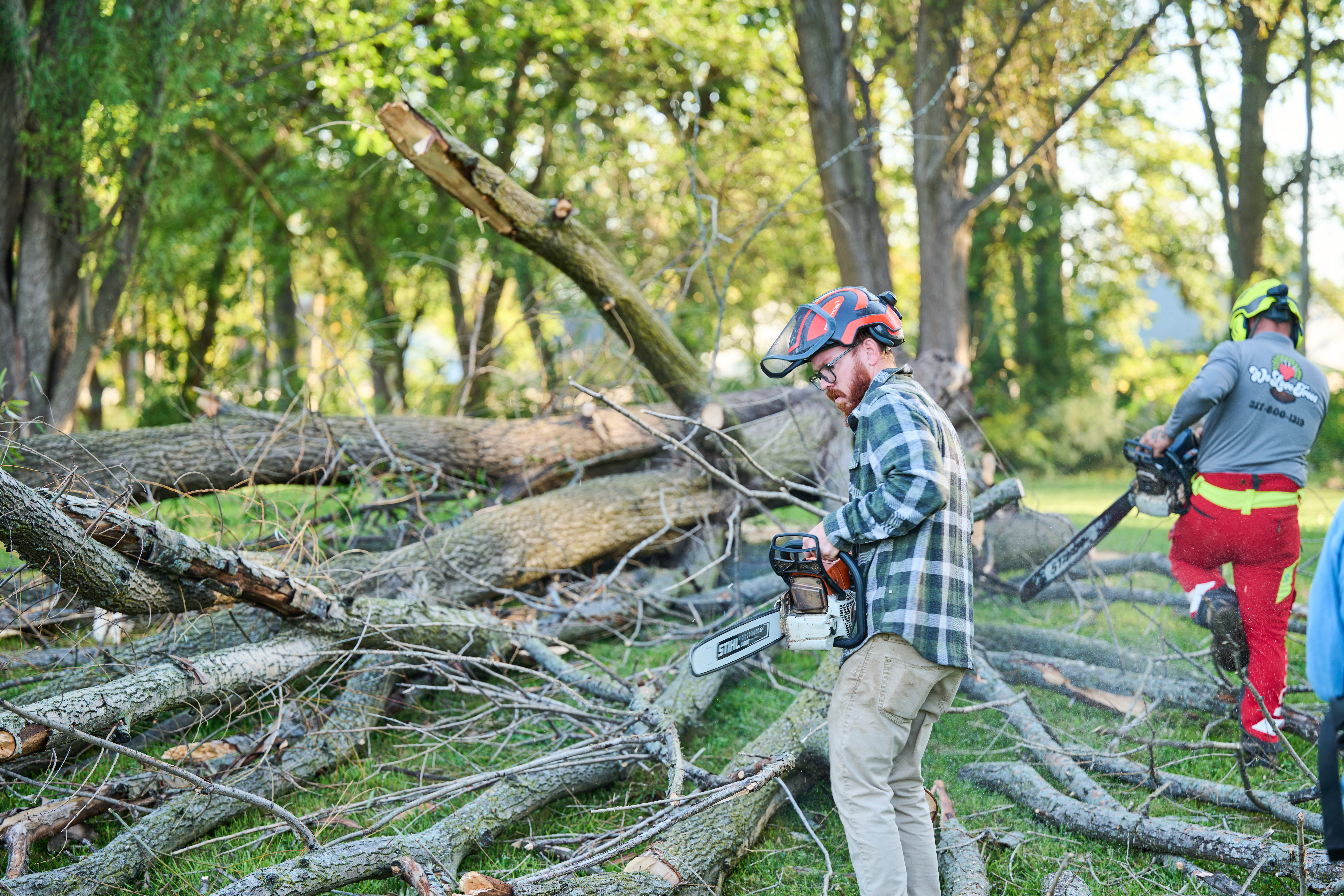
The cost to remove palm trees depends on several factors, including their size, location, and more. Our guide shows the average palm tree removal costs.
Nail your stump-killing project with this simple trick


If you’re looking for an inexpensive way to deal with an annoying tree stump, you’re likely wondering, “Can copper nails kill tree stumps?” While it can take months and likely won’t be effective on large stumps, using copper nails to kill a small-to-medium-sized tree stump is safer and easier than other methods, plus it’s budget-friendly. Here’s how to use copper nails to kill a tree stump.

Not all copper nails will effectively kill a tree stump. Make sure you purchase solid copper nails, as copper-clad or coated nails won’t have the same effect. The oxidation of pure copper is what inhibits the stump’s ability to regrow, so this step is crucial for success.
Using a drill with a ¼-inch bit (or anything smaller than the diameter of the nails you’re using), drill pilot holes in the stump to make it easier to insert the nails. These should be at a slight downward angle and roughly ⅔ of the length of your copper nails. Space the holes evenly, about ½-inch apart, around the top and sides of the stump.
Next, firmly hammer the copper nails into the drilled holes. Ensure they are driven completely into the stump to get the full effect.
Over time, the copper will disrupt the stump’s nutrient absorption, slowly causing it to rot. This process can take one to three months, or possibly a year or more, so be patient and wait before trying alternative methods. Check the stump every week or so for signs of decay.
Once the stump becomes soft and brittle, you can don thick safety gloves and break it apart or use a shovel to remove the remaining tree debris. If necessary, you can add more copper nails to stubborn areas that are still showing signs of life.
When hammering copper nails into a tree stump, be sure to avoid these common pitfalls:
Using the wrong nails: The nails must be pure copper; copper-clad or coated nails won’t work.
Not using enough nails: A few nails won’t deliver enough copper to kill a stump, so be sure to space them throughout the stump.
Using nails that are too short: When it comes to selecting your pure copper nails, the longer the better, and they should be at least three inches long.
Skipping the pilot holes: Drilling pilot holes ensures that the nails penetrate deep enough to disrupt the stump’s ability to regenerate.
Expecting a quick fix: Unlike many other ways to kill a tree stump, using copper nails takes a long time to be effective, taking between a month to a year or possibly more, depending on the size and type of tree.
Attempting to kill a large tree stump with copper nails: This method works best for small to medium-sized stumps (up to 14 inches in diameter); large stumps can take years or may not die at all.
You can use copper nails to kill tree stumps at any time of the year. However, the decomposition process is much slower during colder months due to reduced microbial activity in the wood. For the best results, start in spring or early summer when warmer temperatures and higher moisture levels will help accelerate the process.
Using copper nails to kill a tree stump is DIY-friendly, but it’s a very long process. If you want the stump gone ASAP, stump grinding is the best method, albeit far less safe and simple for a DIY-er. The average cost to rent a stump grinder is around $300, though your budget can range anywhere between $90 and $400, depending on the size and brand of the grinder, as well as where you rent it from and the rental time length. You should also budget $20 to $50 for the protective gloves and safety glasses.
Considering the average cost to grind a stump professionally is $250, hiring a local stump removal professional has a very comparable budget if you need to remove one or two small stumps. However, projects can cost as high as $1,600 for large or multiple tree stumps, so you’ll want to get a custom quote from at least three professionals to budget correctly. It bears repeating that copper nails won’t effectively kill a larger stump, so if that’s what you’re looking for, it’s best to explore stump grinding or other more potent methods of stump removal.
From average costs to expert advice, get all the answers you need to get your job done.

The cost to remove palm trees depends on several factors, including their size, location, and more. Our guide shows the average palm tree removal costs.

How much does it cost to rent a chainsaw? Whether it’s for cleaning up your yard or cutting firewood, learn what options are available and what you’ll pay.

Discover the average tree maintenance cost, key price factors, and tips to save. Get expert insights to plan your tree care budget with confidence.

Trees are fantastic marvels of nature, but they can also be large and cumbersome. Can you get the city to trim or remove a tree for free? Keep reading to find out.

If a tree falls in your yard, your first course of action is to determine the right type of professional to call to remove it. Read on to learn who to hire.

Grinding a tree stump requires a chainsaw, heavy-duty equipment, and a strategy for cleaning up debris. Keep reading to learn how to use a stump grinder.